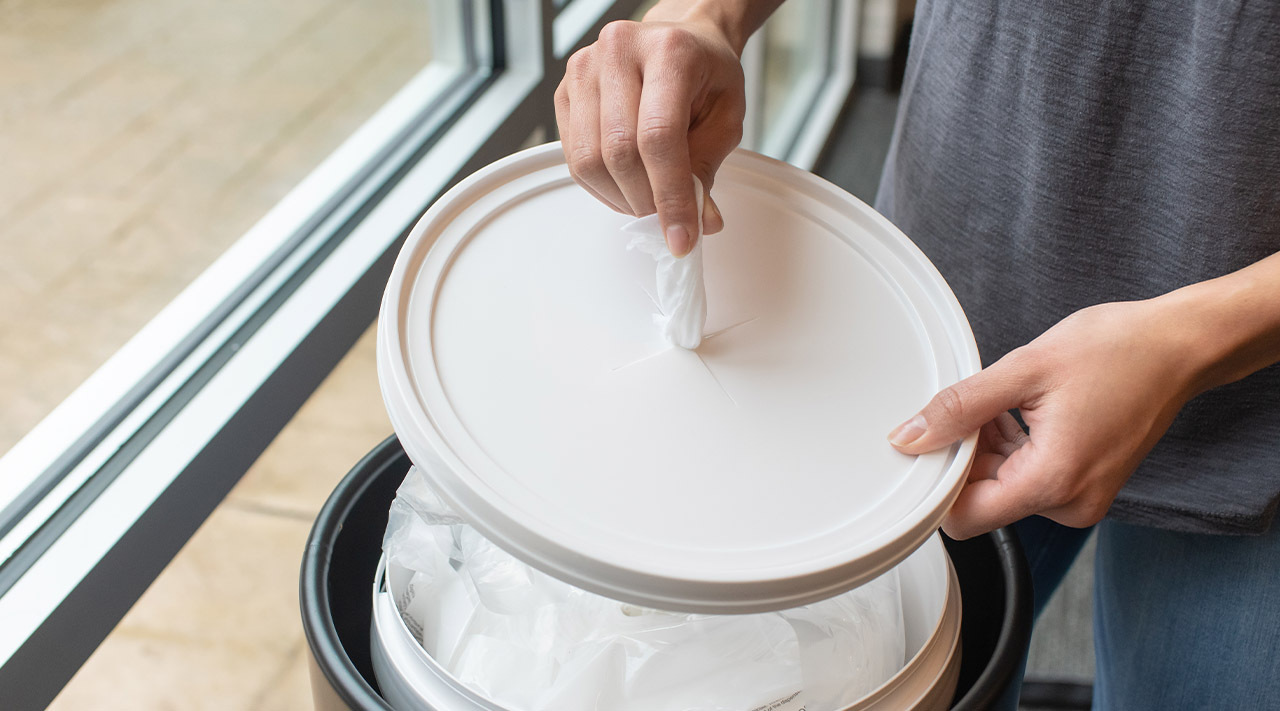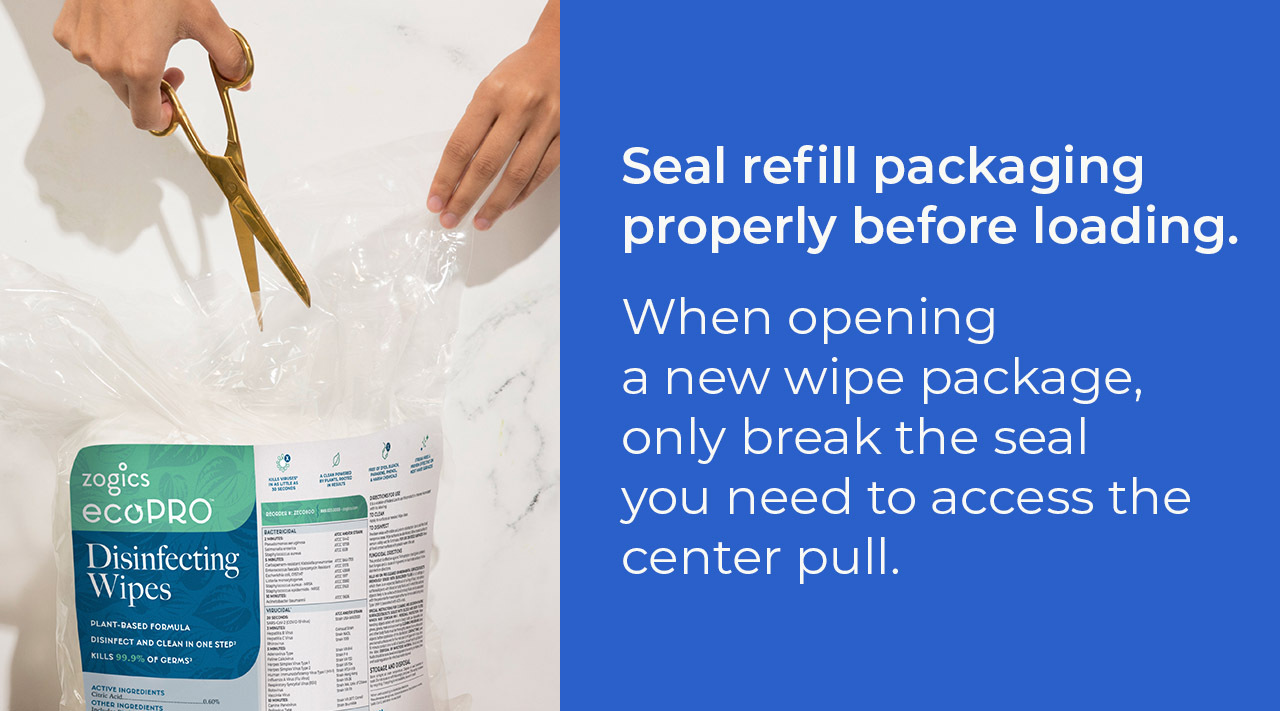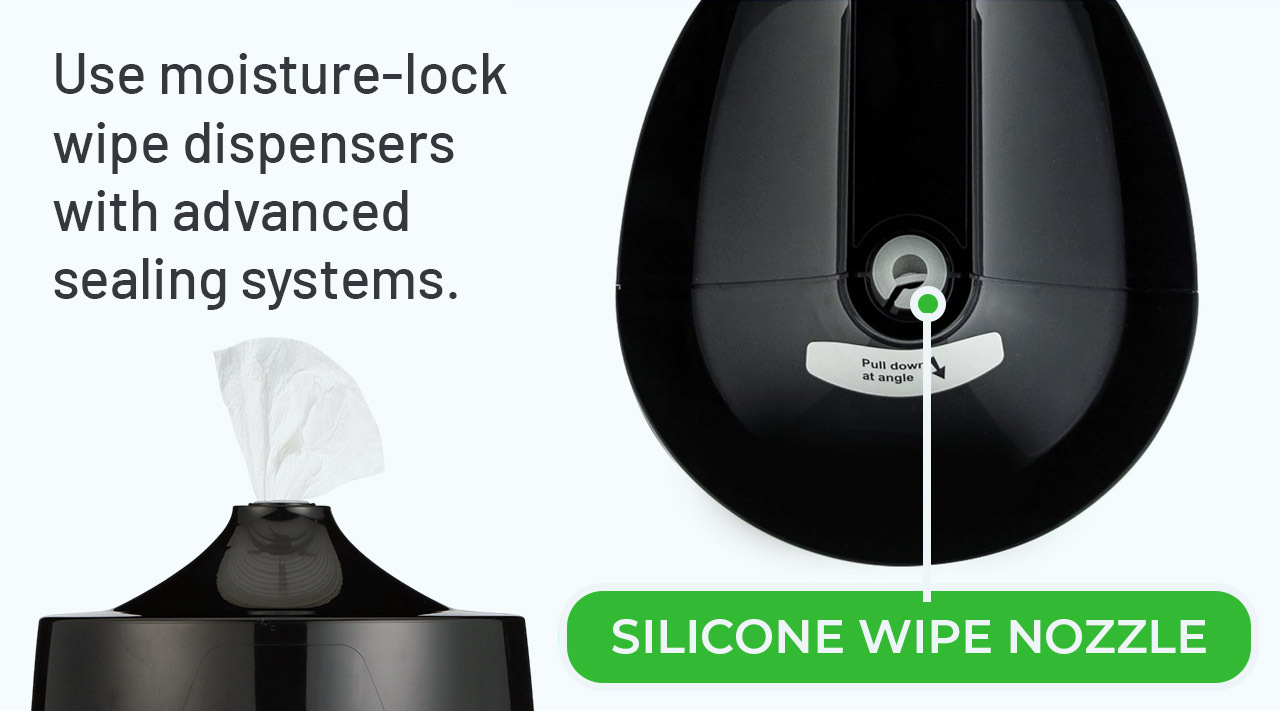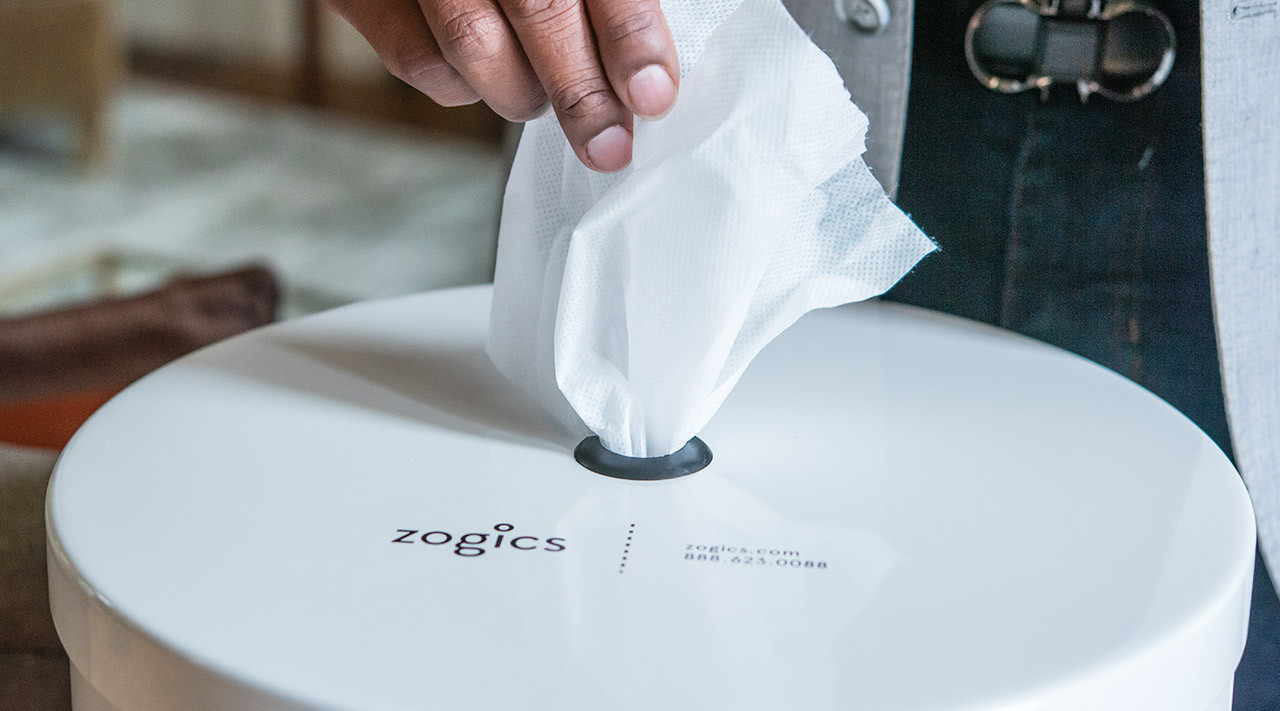Stop Wipes from Drying Out: Dispenser Setup, Refill Best Practices, and Cost-Saving Tips
How to Keep Cleaning Wipes from Drying Out | Dispenser Tips
Dried-out wipes are one of the most common—and most frustrating—complaints from facility managers and custodial staff. When cleaning wipes dry out, tear, or get wasted, you're not just dealing with an operational headache; you're watching your cleaning budget evaporate. Custodial teams often report having to toss entire rolls because they've become unusable, and constant jams slow down cleaning routines in high-traffic areas like gyms, hotels, and healthcare facilities.
The good news? Most wipe waste is preventable. With the right commercial wipe dispenser setup and refill cleaning wipes practices, you can keep wipes fresh longer, reduce staff frustration, and cut costs significantly. This guide walks through proven strategies that facility managers use to maximize wipe lifespan and minimize waste.
Why Do Cleaning Wipes Dry Out or Tear?
Understanding the science behind wipe drying is crucial for prevention. Most commercial wipes contain volatile cleaning solutions—typically water combined with alcohol or quaternary ammonium compounds. When exposed to air, these solutions evaporate rapidly, leaving wipes dry and ineffective. This evaporation process accelerates dramatically without proper containment, emphasizing why airtight dispensers are essential for commercial facilities.
Several factors contribute to premature drying and tearing:
• Loose lids and improperly sealed bags are the primary culprits. When dispenser lids don't close tightly or refill bags aren't resealed properly, moisture evaporates quickly. Even a small gap can expose wipes to air, drying them out within hours in low-humidity environments.
• Overfilling or underfilling dispensers creates mechanical issues. Overfilled dispensers prevent lids from closing properly and create tension that can tear wipes during dispensing. Underfilled dispensers may cause wipes to shift inside, breaking the center-pull chain and leading to clumps or tears.
• Using the wrong wipe type for your dispenser is another common mistake. Not all wipes are designed for all dispensers. Bucket-style dispensers work differently than wall-mounted units, and using incompatible products often results in jamming, tearing, or rapid dry-out.
• Environmental factors play a significant role in commercial facilities. Gyms and locker rooms face particular challenges—high heat, direct sunlight through windows, and constant airflow from HVAC systems can all accelerate moisture loss. Placing dispensers near heating vents or in direct sun exposure can reduce wipe lifespan by 50% or more.

Dispenser Setup Tips for Fresher Wipes
Proper dispenser setup is critical for maintaining wipe moisture and preventing waste. These setup practices can extend wipe life considerably while reducing refill frequency:
Center-Pull Threading for Maximum Freshness
Always thread wipes from the center of the roll. Center-pull dispensing keeps the roll compact and reduces air exposure compared to edge-pull methods. When threading, pull slowly and avoid yanking, which can break the pull chain early and expose more of the roll to air. This technique works particularly well with wall-mounted wipe dispensers designed for center-pull operation.
Seal Management and Training
Keep the lid closed tight between uses. This seems obvious, but many facilities overlook this simple step. Train staff to fully close and seal dispenser lids after each refill and encourage members or guests to close lids after use. In high-traffic areas, consider gym wipes floor dispenser with spring-loaded lids that close automatically, ensuring consistent moisture retention even when users forget.
Strategic Dispenser Placement
Position dispensers away from direct sunlight and HVAC vents. Conduct a quick audit of your dispenser locations. Facilities often report better results by simply moving dispensers a few feet away from windows or air vents. In particularly challenging environments, wall-mounted dispensers in shaded areas typically outperform floor-standing models in sunny spots. Map your facility's airflow patterns and heat sources to identify optimal placement zones.

Refill Best Practices for Commercial Cleaning Wipes
How you handle bulk cleaning wipe refills matters just as much as the dispenser itself. These practices help maintain wipe freshness from the moment you open a new package:
Proper Seal Management During Refills
Seal refill packaging properly before loading. When opening a new wipe package, only break the seal you need to access the center pull. Keep the rest of the bag sealed to maintain moisture in the unused portion. If you're loading bucket-style dispensers, transfer antibacterial disinfecting wipes quickly and reseal the original packaging immediately. This practice is especially critical for plant-based and biodegradable wipes, which often contain natural ingredients that evaporate faster than synthetic formulations.
Staff Training for Consistency
Train staff on proper refill procedures to prevent air exposure. Custodial teams often report that staff training makes a significant difference in wipe longevity. Create a simple one-page guide with photos showing:
• Correct threading technique
• Proper sealing methods
• Common mistakes to avoid
• Environmental factors to monitor
Even experienced staff benefit from periodic refreshers on best practices, particularly when switching to new dispenser models or wipe types.

Best Dispensers to Prevent Wipe Dry-Out
Selecting the right dispenser equipment directly impacts your facility's wipe waste and overall cleaning costs. Not all dispensers offer equal protection against moisture loss:
Sealed vs. Open Systems
Consider sealed dispenser systems versus open-top buckets. Open-top bucket-style dispensers are convenient but expose wipes to constant airflow, especially in high-traffic areas. Wall-mounted units with sealed lids and center-pull wipe dispensers typically keep wipes fresh 2-3 times longer in comparable environments. For gyms and locker rooms where humidity and temperature fluctuate, sealed dispensers prove particularly cost-effective.
Cost-Saving Tips That Reduce Wipe Waste
Beyond setup and refills, strategic choices about equipment and products can dramatically reduce wipe waste and costs:
Product Selection for Longevity
Buy wipes designed for slower dry-out. Product selection matters significantly. Look for wipes with:
• Appropriate saturation levels (not oversaturated)
• Thicker substrate construction
• Compatible chemistry for your dispenser type
• Proper packaging for commercial use
Thinner, over-saturated wipes may seem like a better value, but they often dry out faster or tear more easily. Custodial teams frequently report that slightly thicker, properly-saturated bulk wipe refills for gyms and facilities last longer and dispense more reliably, even if the per-unit cost is marginally higher.
Calculate Your True Cost of Waste
Consider these cost factors when evaluating your wipe program:
• Dried-out wipes represent both product waste and labor cost (staff time spent dealing with jams and refilling more frequently)
• Quality dispensers reduce replacement frequency and maintenance time
• Proper wipe selection can reduce overall consumption by 20-30% in typical commercial facilities
• Training investment pays for itself through reduced waste within the first month
Environmental Monitoring
Implement simple environmental controls:
• Install humidity meters in wipe storage areas
• Schedule seasonal dispenser audits (heating/cooling transitions)
• Document problem locations for targeted solutions
• Consider supplemental humidity control in extremely dry environments

Keep Your Wipes Fresh and Your Costs Down
Simple changes to your dispenser setup and cleaning wipe refill practices can make a significant difference in wipe longevity and operational costs. By understanding the science of moisture evaporation, implementing proper setup procedures, training staff on best refill practices, and choosing the right equipment, facility managers often report reducing wipe waste by 40% or more.
The key takeaways for maximum wipe freshness:
• Select appropriate commercial wipe dispensers with moisture-lock features
• Position dispensers away from environmental stressors
• Train staff consistently on proper refill techniques
• Monitor and adjust based on your facility's unique conditions
The Cleaning Station offers a comprehensive range of commercial dispensers specifically designed for moisture retention, along with bulk cleaning wipes engineered for longer-lasting freshness in high-traffic facilities. Whether you're outfitting a gym, hotel, healthcare facility, or corporate building, proper dispenser selection paired with best practices delivers measurable cost savings and happier cleaning teams. For additional guidance on choosing the ideal wipes for your space, explore our Best Wipes for Gym Equipment: Complete Guide.
Ready to reduce wipe waste in your facility? Browse commercial wipe dispensers and bulk cleaning wipes engineered for long-lasting freshness from The Cleaning Station.
Related Resources:
• Best Commercial Cleaning Products for Sparkling Results [Complete Guide in 2025]
• 6 Steps to Clean Gym Showers for a Spotless Facility
• Go Green Without Tradeoffs: Eco-Friendly, Wipes, Cleaners, and Refill Systems
Recent Posts
-
Fragrance-Free vs Scented: Build an Allergy-Safe Cleaning Program that Still Works
When "Clean" Becomes a Complaint You know the scene: your custodial team disinfects the office overn …Dec 05, 2025 -
How to Prevent Slippery Floors After Disinfecting: Custodian Safety Guide
When Clean Turns Dangerous You've just finished disinfecting the lobby floor. It's spotless. Germ-fr …Nov 28, 2025 -
Sensitive Skin Cleaning: Low Irritant Disinfectants, Gloves, and Hand Care Stations
Facility managers often report that skin irritation ranks among the top three health complaints from …Nov 14, 2025




